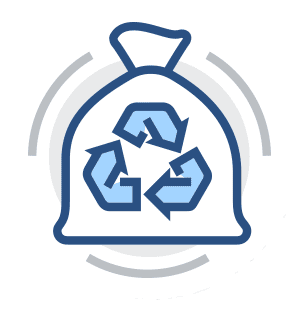Sustainability Statement
Miner Enterprises Inc.
Committed to Environmental Sustainability
Throughout Miner Enterprises, our management staff, operations teams and line workers are all mindful of our environmental impact. Many of our suppliers are practicing ISO 14001 certified EMS (environmental management system). Our goal is to systematically manage our energy, water and incoming materials — as well as our recycling and waste management programs—with periodic audits by both external experts and full-time internal staff.
Working in concert with our customers’ engineering and maintenance staffs, Miner is committed to helping railroads and fleet operators the world over achieve and surpass their own sustainability, operational and quality assurance goals, in all areas:


MATERIALS
While much of the materials Miner utilizes to manufacture our products is non-renewable, we do have a robust recycling and reclamation program, in which old draft gears and other products are reacquired and/or returned for reuse, reclamation and refabrication. Wherever possible, Miner Enterprises purchases environmentally safe materials and uses process materials that are recyclable. Miner is also developing partnerships with its supply chain and their efforts, utilizing returnable plastic and metal bins. Suppliers are sent returnable bins to load high volume materials purchased.

PROCESSES
Miner continuously looks for ways to improve our manufacturing processes that have a positive impact on protecting people and the environment. Most recently, we have eliminated unnecessary painting processes from our products, including Miner brake beams.

WASTE
For incoming materials, Miner explicitly utilizes bulk purchases as often as possible to reduce packaging waste. Throughout operations at all of our facilities, we collect and recycle machine oil, cardboard, paper, plastic waste, stainless steel, brass, aluminum cans, and plastic waste. Within the offices we participate in a paper recycling program and avoid the use of paper wherever possible, sending invoices and quotes via email. Pallets are recycled and those beyond repair are re-purposed or ground as mulch.

WATER
Miner utilizes municipal water and utilities in our manufacturing facilities. Types of use include normal building functions, R&D, landscaping, cafeteria operations and production processes. In our Geneva, IL facility we utilize a “cooling tower” in the manufacturing process. This closed loop system circulates treated cool water through process equipment that requires cooling. This water is recirculated so it is not expelled into a sewer system, keeping water consumption to a minimum, and does not send used water through a sewer reclamation process. In addition, some of the equipment utilizes a radiator style cooling methods that does not require water cooling at all. Our manufacturing and assembly plant in Saltillo, Mexico, utilizes a state of the art water recycling system for the paint line capable of reusing 80% of the water being used in the last 3 stages for the initial 3 stages. All water that is sent to the city lines is properly cleaned and conditioned to be of no harm to the environment.

ENERGY
Throughout Miner Enterprises facilities, we make a concerted effort to minimize our consumption of natural gas and electricity, thus reducing our carbon footprint. LED lighting is installed in a large portion of the facilities. Motion sensor lighting reduce electric use when not in use. High speed overhead doors reduce energy spent with heating loss. We utilize electric rechargeable forklifts and man-lifts in most of our facilities to reduce gas consumption. In our MX facility we use an innovative curing oven arrangement that allows quick firing and temperature reaching, and also helps to keep the temperature uniform in all the curing oven with just a fraction of the energy of the typical lines. These improvements are helping to save up to 25% in gas, compared with the typical straight line arrangement.

OCCUPATIONAL HEALTH & SAFETY
Miner has implemented programs to maximize employee safety and health while reducing risk across the board. These safe operation measures include automating dangerous manual processes and improving the work environment.
